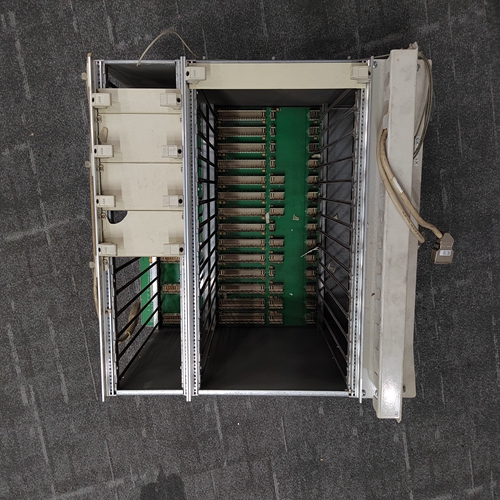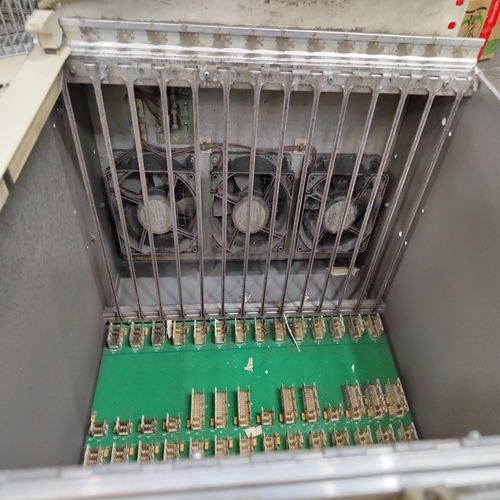
3BSE000743R1输出框架
即使在通道命令设置为发出单个发送。
示例发送周期计算:如果Word 10包含值3,则指定秒作为时间单位,并且字11包含值20,则发送周期为20秒。发送通常在每个发送周期开始时发出。如果待转移发送期间未完成,信道错误位和详细信道
状态字将被设置为指示非致命周期错误。待转移可以在周期错误发生后仍然完成。对于设置为发出的通道命令:多次发送,下一次传输将仅在挂起传输之后发出完成。
设置为发出单个发送的通道命令只能有一个挂起的发送转移
如果时间单位数为零,则在上一次传输完成;信道错误位不报告周期错误。
(Word 12)每次发送的超时:Word 12指定时间(以第二)FIP总线控制器将在设置前等待发送传输完成
通道错误位和详细的通道状态位,用于指示非致命超时错误即使发生超时,传输仍然可以完成。因此应用程序可以选择发生这种情况时要做什么。
如果超时值被指定为零,不会报告超时错误。
对于大多数应用,不需要指定超时,充当超时。(字12应为零表示无超时。)然而,有两个
建议指定超时的特殊情况:A、 当时间单位数(字11)为零时,后续传输将
在上一次转账完成且无期间错误时立即发出报道。在这种情况下,可以指定超时值,以便超时错误为由信道错误位报告。
B、 当发送周期非常长时(分钟或小时)。在这种情况下,超时时间较短可以指定该值,以便总线控制器状态位的If位9(信道错误)指示信道错误
程序可以从总线控制器请求详细的通道状态数据。(该命令对总线控制器状态位的值没有影响)。
返回此数据时,第一个单词将包含一个错误代码,指示原因错误。请参阅附录B中的表格,了解主要和次要的完整列表错误代码。第二个字将指示信道是活动还是空闲
riod is in effect even when the Channel
Command is set up to issue a single send.
Example Send Period Calculation: If Word 10 contains a value of 3 specifying
seconds as the time unit and Word 11 contains a value of 20, then the send period is
20 seconds.
A send will normally be issued at the start of each send period. If the pending transfer
has not completed during the send period, the Channel Error bit and Detailed Channel
Status words will be set to indicate a non-fatal period error. The pending transfer can
still complete after the period error occurs. For Channel Commands set up to issue
multiple sends, the next transfer will be issued only after the pending transfer
completes.
A Channel Command set up to issue a single send can have only one pending send
transfer.
If the Number of Time Units is zero, a subsequent transfer will be issued as soon as the
previous transfer completes; no period errors are reported by the Channel Error bit.
(Word 12) Timeout for Each Send: Word 12 specifies the time (in hundredths of a
second) the FIP Bus Controller will wait for a send transfer to complete before setting
the Channel Error bit and Detailed Channel Status bits to indicate a non-fatal timeout
error. The transfer can still complete even after a timeout occurs. As a result, an
application can choose what to do if one occurs. If the timeout value is specified as zero,
no timeout errors will be reported.
For most applications a timeout need not be specified because the send period, in effect,
acts as a timeout. (Word 12 should be zero for no timeout.) However, there are two
special circumstances in which specifying a timeout is recommended:
A. When the number of time units (word 11) is zero, so that a subsequent transfer will
be issued as soon as the previous transfer completes and no period errors are
reported. In this case a timeout value can be specified so that timeout errors will be
reported by the Channel Error bit.
B. When the send period is very long (minutes or hours). In this case a shorter timeout
value can be specified so the a If bit 9 (Channel Error) of the Bus Controller Status bits indicates a channel error, the
program can request Detailed Channel Status data from the Bus Controller. (The
command has no effect on the value of the Bus Controller Status bits).
When this data is returned, the first word will contain an error code indicating the cause
of the error. Refer to the tables in Appendix B for a complete listing of major and minor
error codes.
The second word will indicate whether the channel is active or idle










